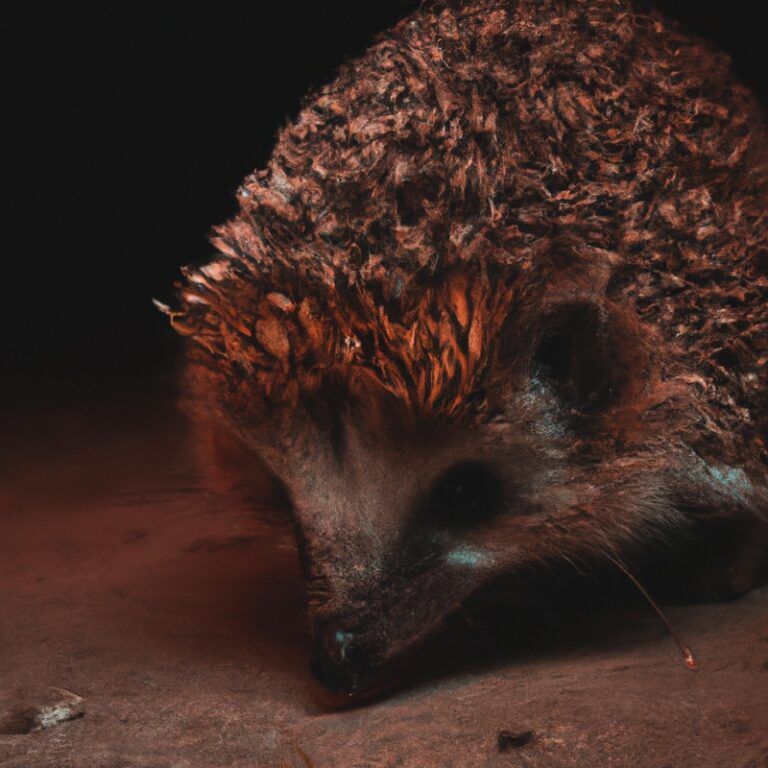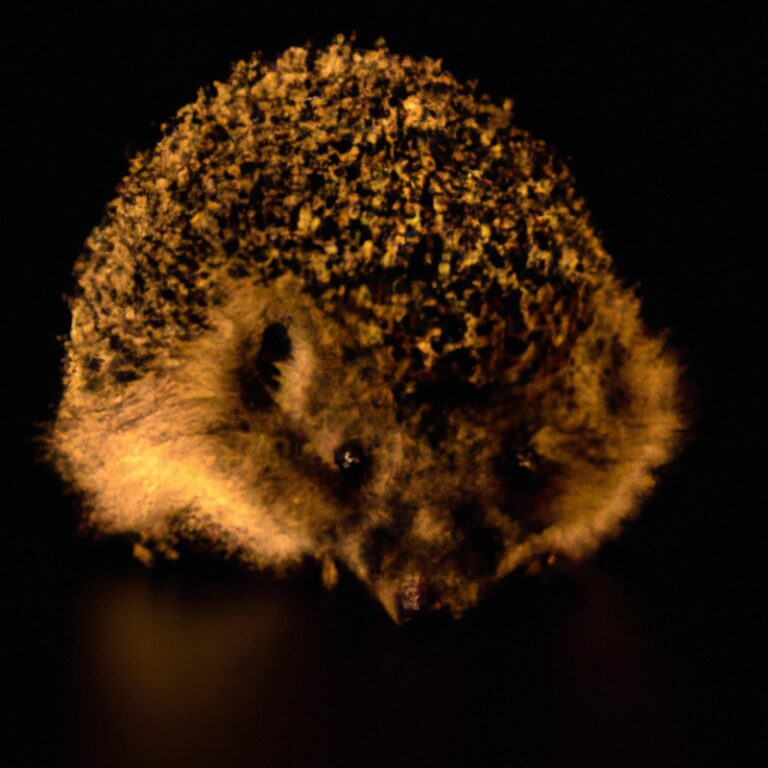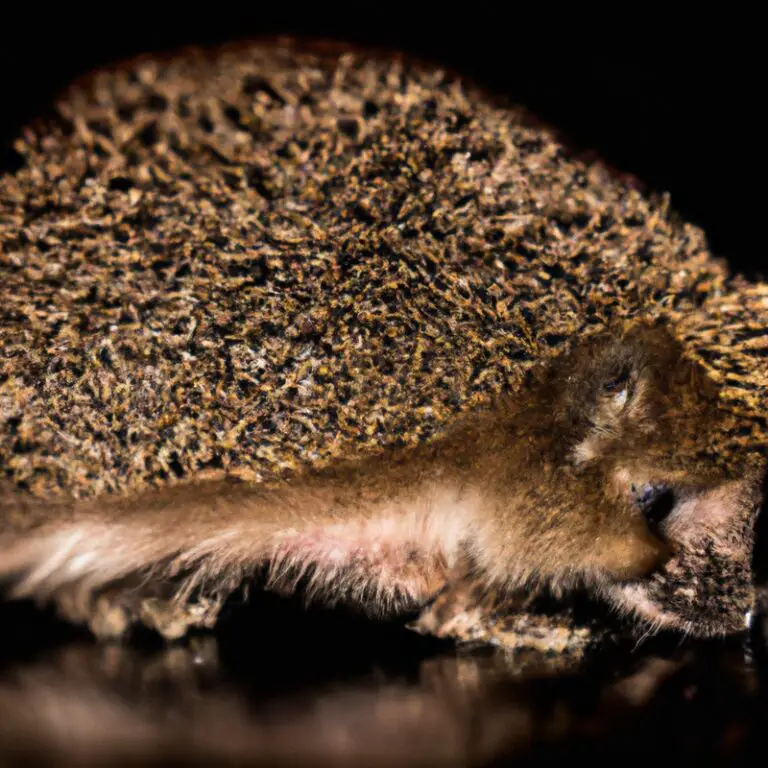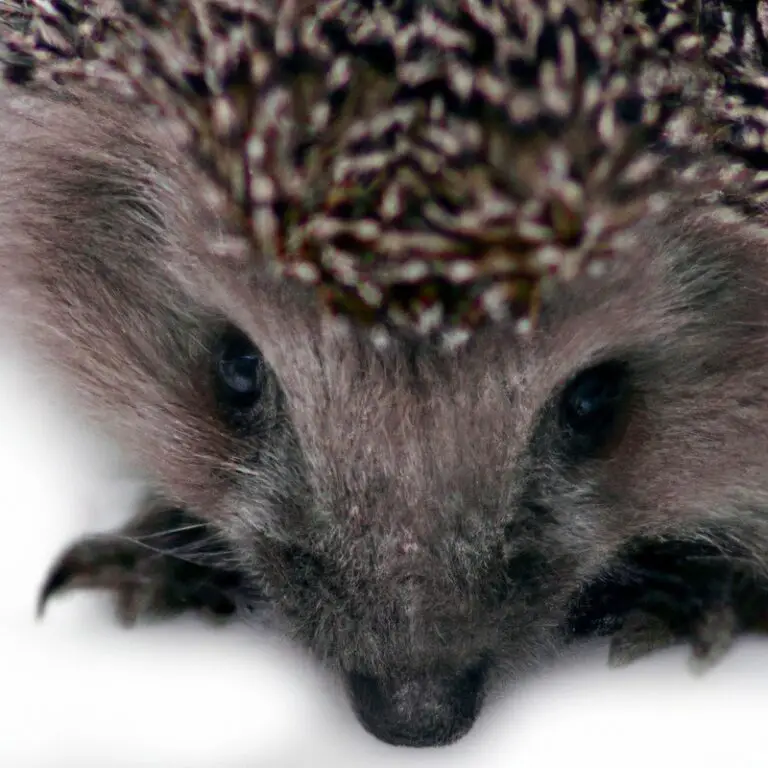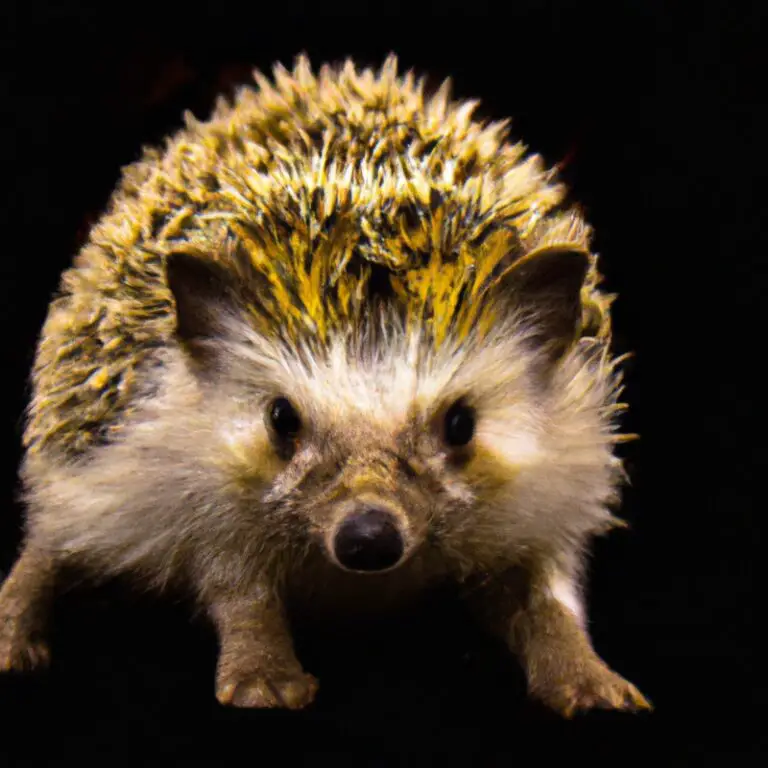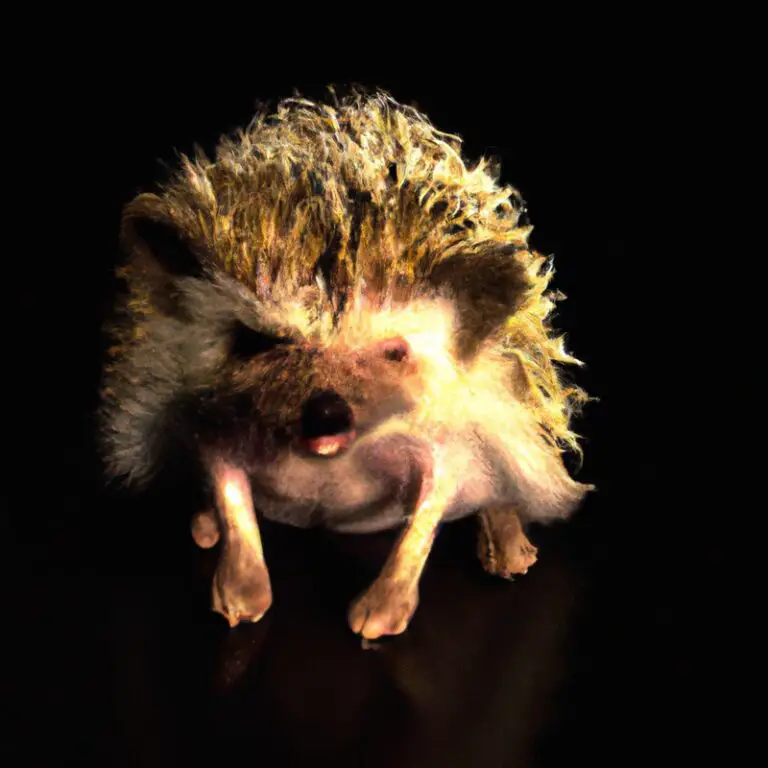How Do Hedgehogs Interact With Nocturnal Animals?
Key Takeaways:
- Hedgehogs primarily interact with nocturnal animals through vocalizations and scent markings.
- They often compete for food and territory with other nocturnal animals.
- Hedgehogs use their spiky quills as a defense mechanism when interacting with nocturnal predators.
- Mutual avoidance is common between hedgehogs and larger nocturnal animals to minimize conflicts.
Have you ever wondered how hedgehogs, those spiky little creatures, navigate the dark and mysterious world of the night? Well, you’re in for a treat! In this blog article, we’ll dive into the fascinating world of hedgehog behavior and explore how they interact with other nocturnal animals.
From their sleep patterns and foraging habits to their social behavior, we’ll uncover the secrets of these pint-sized adventurers.
Get ready to uncover the competition for resources, the risks they face from predators, and the surprising mutualistic relationships they form. So, join us as we unravel the captivating world of hedgehog interactions with nocturnal animals!
| Interaction Type | Nocturnal Animal | Hedgehog |
| Predation | Owls | Nocturnal predators like owls |
| Competition | Mice | May compete with mice for food |
| Symbiosis | Bats | Hedgehogs may share common habitats with bats |
| Nocturnal Foragers | Foxes | Hedgehogs are active at night |
| Mutual Avoidance | Racoons | Hedgehogs and racoons generally avoid each other |
Hedgehog Behavior
Hedgehog Behavior: Learn about sleep patterns, foraging habits, and social behavior.
Hedgehog sleep patterns
Hedgehogs are nocturnal animals, which means they are most active at night.
During the day, they usually sleep in a tucked-up position to protect themselves from potential predators.
Their sleep patterns can vary, with some hedgehogs sleeping for several hours at a time, while others may wake up periodically throughout the night.
Like many other animals, hedgehogs also go through periods of deep sleep and lighter sleep.
They are adapted to their nocturnal lifestyle and have the ability to navigate and forage for food during the night.
Hedgehog foraging habits
Hedgehogs are primarily insectivorous and forage for food at night.
They have a keen sense of smell that helps them locate their prey, which includes insects, worms, snails, and even small vertebrates.
Hedgehogs use their sharp teeth and long tongues to capture and consume their food.
They are known to dig and probe with their snouts to find hidden prey in the soil or under leaf litter.
Hedgehogs are opportunistic feeders and will eat a variety of food sources available to them in their habitat.
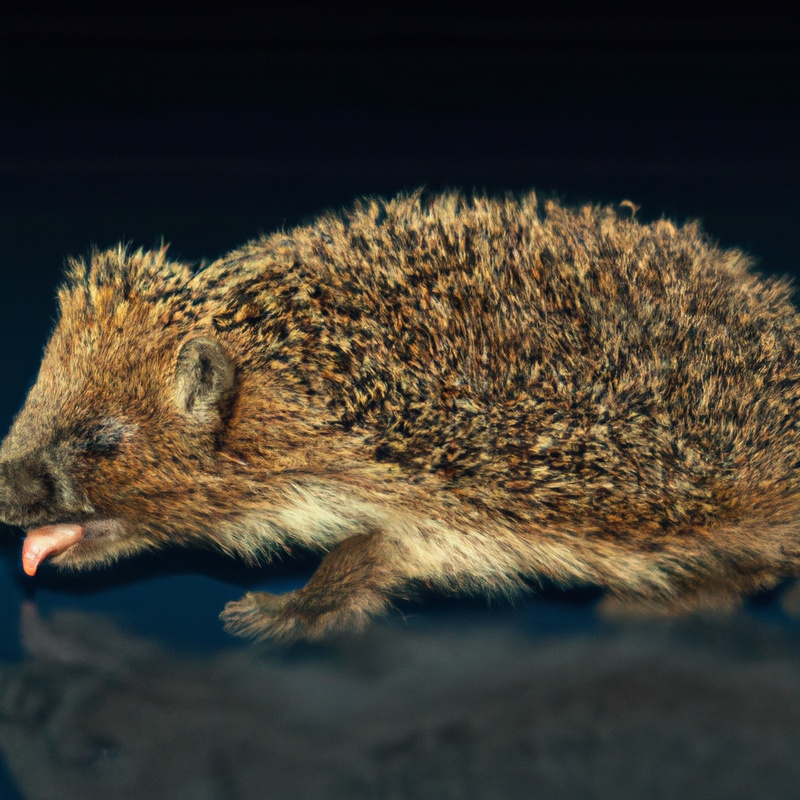
Hedgehog social behavior
Hedgehogs are solitary animals by nature, preferring to live and forage on their own.
They don’t form social groups or engage in significant social interactions.
However, during mating season, male hedgehogs may encounter and interact with females.
These interactions can be aggressive, with males sometimes engaging in combat for the opportunity to mate.
Outside of breeding season, hedgehogs may occasionally tolerate the presence of other individuals in their territory but typically maintain their distance.
Nocturnal Animal Behavior
Nocturnal animals exhibit behavioral patterns mainly during the night due to specific reasons.
Why are animals nocturnal?
Animals are nocturnal because it offers them several advantages. The darkness provides cover from predators, allowing them to venture out and search for food without being easily seen.
Moreover, many prey species are also nocturnal, increasing the chances of a successful hunt.
Additionally, the cooler temperatures at night are favorable for certain animal species. This evolutionary adaptation helps animals optimize their survival and energy efficiency in their respective ecosystems.
So, being active at night is a strategic choice for many animals.
Examples of nocturnal animals
Nocturnal animals are creatures that are active during the night and sleep during the day.
Here are a few examples of nocturnal animals:
- Owls: Known for their exceptional night vision and silent flight, owls are perfectly adapted to hunt their prey at night.
- Bats: These fascinating mammals navigate in the dark using echolocation, emitting high-frequency sounds to locate insects for food.
- Raccoons: With their masked faces and agile paws, raccoons come out at night to search for food, often scavenging through garbage bins.
- Fireflies: These insects produce a fascinating light show at night, using bioluminescence to attract mates.
- Hedgehogs: Hedgehogs are small mammals with spiky exteriors. They forage for food and explore their surroundings under the dark sky.
These are just a few examples of the many nocturnal animals that have adapted to thrive in the darkness.
Nocturnal animal adaptations
Nocturnal animals have several adaptations that help them thrive in low-light conditions.
Some common adaptations include enhanced night vision, such as larger pupils and more rod cells in their eyes.
They also have beautifully designed ears to detect even the faintest sounds.
Nocturnal animals often possess a keen sense of smell to navigate their surroundings and locate their prey.
Another important adaptation is their ability to remain silent while hunting, allowing them to sneak up on their prey undetected.
These adaptations contribute to their success and survival in the nocturnal world.
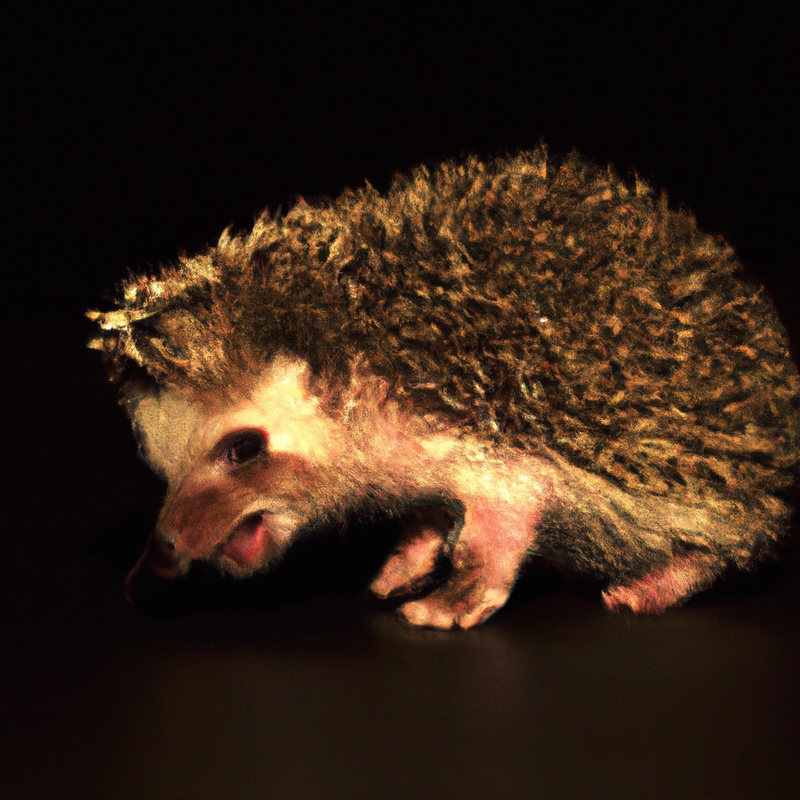
Interactions between Hedgehogs and Nocturnal Animals
Hedgehogs interact with nocturnal animals through competition for resources, predation risk, and mutualistic relationships.
Competition for resources
Competition for resources can occur between hedgehogs and other nocturnal animals. Since many nocturnal animals rely on similar resources such as insects, worms, and small rodents, there can be competition for food and shelter.
Hedgehogs have a diverse diet and can consume a wide range of prey, but they may still compete with other animals for these resources.
Additionally, competition for nesting sites and territories can also occur, as nocturnal animals seek out suitable habitat for breeding and raising their young.
Predation risk
Predation risk is a significant concern for hedgehogs when it comes to their interactions with nocturnal animals.
They face the risk of being hunted by predators such as foxes, badgers, and large birds of prey.
Hedgehogs’ reliance on their spiky defense mechanism is not enough to completely protect them from predation.
They need to remain cautious and alert to minimize their vulnerability to nocturnal predators.
By seeking safe hiding places and avoiding open areas during nighttime foraging, hedgehogs can reduce their predation risk and improve their chances of survival.
Mutualistic relationships
Mutualistic relationships are important interactions between different species that benefit both parties involved. In the case of hedgehogs, they have mutualistic relationships with nocturnal animals.
For example, hedgehogs feed on various insects that can be harmful to crops or gardens.
In return, nocturnal animals like owls and foxes benefit from having a source of prey readily available. This mutually beneficial relationship helps maintain the balance in ecosystems and promotes biodiversity.
It’s fascinating how different species can rely on each other for survival and thrive together in their natural habitats.
Hedgehogs and Owls
Hedgehogs and owls have a complex relationship.
Hedgehogs as prey for owls
Hedgehogs are prey for many nocturnal animals, including owls.
Owls have excellent night vision and hearing, allowing them to easily locate and capture hedgehogs.
The spines of hedgehogs are not much of a deterrent for owls, who have evolved to deal with this defense mechanism.
Once caught, owls use their sharp talons and beaks to overpower and consume the hedgehog.
This natural predator-prey relationship is a common occurrence in the wild.
Hedgehogs’ defense mechanisms against owls
Hedgehogs have developed effective defense mechanisms to protect themselves from owls.
Firstly, their spiky quills serve as a physical barrier, making it difficult for owls to attack them.
Secondly, hedgehogs have the ability to roll into a tight ball, exposing only their spines as a shield.
This makes it challenging for an owl to grab or injure them.
Additionally, hedgehogs are adept at camouflaging themselves in their environment, blending in with the surrounding vegetation to avoid detection by owls.
These defense strategies help hedgehogs survive in their nocturnal world.
Hedgehogs and Bats
Hedgehogs and bats have an intriguing relationship.
Hedgehogs’ role as predators of bats
Hedgehogs play a surprising role as predators of bats.
These small, nocturnal mammals have been observed preying on bats when given the opportunity.
Hedgehogs use their sharp teeth and claws to catch and consume bats, often targeting them while they are roosting or in flight.
This behavior highlights the versatility and adaptability of hedgehogs as hunters.
While bats are not their primary prey, hedgehogs’ opportunistic feeding habits allow them to take advantage of available food sources, including bats.
This finding showcases the complex and interconnected nature of nocturnal ecosystems.
Hedgehogs’ interactions with bat habitats
Hedgehogs have interesting interactions with bat habitats. They often seek shelter in the same places as bats.
This includes hollow trees, caves, or abandoned buildings.
Hedgehogs are solitary animals and do not pose a threat to bats. They also consume similar food, such as insects, which can be found around these habitats.
This shared environment allows for a harmonious coexistence between hedgehogs and bats.
Hedgehogs and Rodents
Hedgehogs and rodents have a complex relationship involving competition for food and shelter, as well as hedgehogs acting as predators of rodents.
Competition for food and shelter
Competition for food and shelter is a key aspect of interactions between hedgehogs and nocturnal animals. Hedgehogs compete with other animals, such as rodents, for resources like insects and small prey.
They may also compete for suitable shelter, such as burrows or hiding places.
This competition can be fierce, as these resources are essential for their survival. In urban areas, with less availability of natural resources, this competition can be even more intense.
Hedgehogs may have to adapt their behavior or even fight for access to food and shelter in order to survive.
Hedgehogs as predators of rodents
Hedgehogs are natural predators of rodents. They have a keen sense of smell and hearing, which helps them locate their prey.
Once a hedgehog finds a rodent, it will use its sharp teeth and claws to catch and immobilize it.
Hedgehogs are effective at controlling rodent populations, which helps maintain balance in ecosystems and reduces the risk of disease transmission. Additionally, hedgehogs can eat a large number of rodents in a single night, making them valuable allies in pest control.
Frequently Asked Questions (FAQs)
Are hedgehogs afraid of nocturnal animals?
No, hedgehogs are not typically afraid of nocturnal animals. Hedgehogs are naturally nocturnal creatures themselves, so they are often adapted to interact with other animals that are active during the night.
They have their own set of defenses, such as their spiky quills, to protect themselves from potential threats.
However, it is important to note that hedgehogs may still become cautious or defensive if they feel threatened by any animal, regardless of whether it is nocturnal or not.
Do hedgehogs have any natural predators?
Hedgehogs do have natural predators in the wild.
Some of their main predators include foxes, badgers, owls, and larger birds such as eagles and hawks.
These predators are able to capture and eat hedgehogs due to their ability to climb trees and fly, or because of their strength and size.
Hedgehogs have developed several defense mechanisms such as rolling into a ball and using their spines for protection, but they can still fall victim to their predators.
Can hedgehogs live peacefully with other animals?
Hedgehogs can typically live peacefully with other animals, as long as certain precautions are taken.
They are known to get along well with cats and dogs, but introductions should be done slowly and supervised.
When it comes to smaller animals like rodents or birds, it’s best to keep them separated as hedgehogs may see them as prey.
Proper socialization and providing a safe environment are key to ensuring a peaceful coexistence between hedgehogs and other animals.
How do hedgehogs defend themselves from nocturnal predators?
Hedgehogs are equipped with several defense mechanisms to protect themselves from nocturnal predators.
Here’s how they do it:
- Spiky exterior: Hedgehogs have a coat of sharp spines covering their bodies, which they can raise and form into a protective ball when threatened. This makes it difficult for predators to attack them.
- Hissing and snorting: When faced with danger, hedgehogs may produce loud hissing or snorting sounds. This can startle predators and deter them from approaching.
- Camouflage: Hedgehogs have the ability to blend into their surroundings due to their natural coloring, making it harder for predators to spot them.
- Curling up: One of the most well-known defense mechanisms of hedgehogs is their ability to curl up into a tight ball, with their spines facing outwards. This posture provides maximum protection against predators.
By utilizing these defense strategies, hedgehogs are able to effectively defend themselves against nocturnal predators and increase their chances of survival.
Final Verdict
Hedgehogs have fascinating interactions with nocturnal animals. Their behavior, sleep patterns, foraging habits, and social behavior all play a role in these interactions.
They compete for resources, face predation risk, and even form mutualistic relationships with other nocturnal creatures.
Specifically, hedgehogs and owls have a predator-prey relationship, while hedgehogs and bats have a more complex dynamic as hedgehogs serve as predators of bats and interact with bat habitats. Additionally, hedgehogs and rodents compete for food and shelter, with hedgehogs acting as predators of rodents.
Overall, hedgehogs demonstrate adaptations and defense mechanisms to navigate these interactions with nocturnal animals.
They continue to fascinate scientists and provide valuable insights into the intricate relationships in the natural world.


